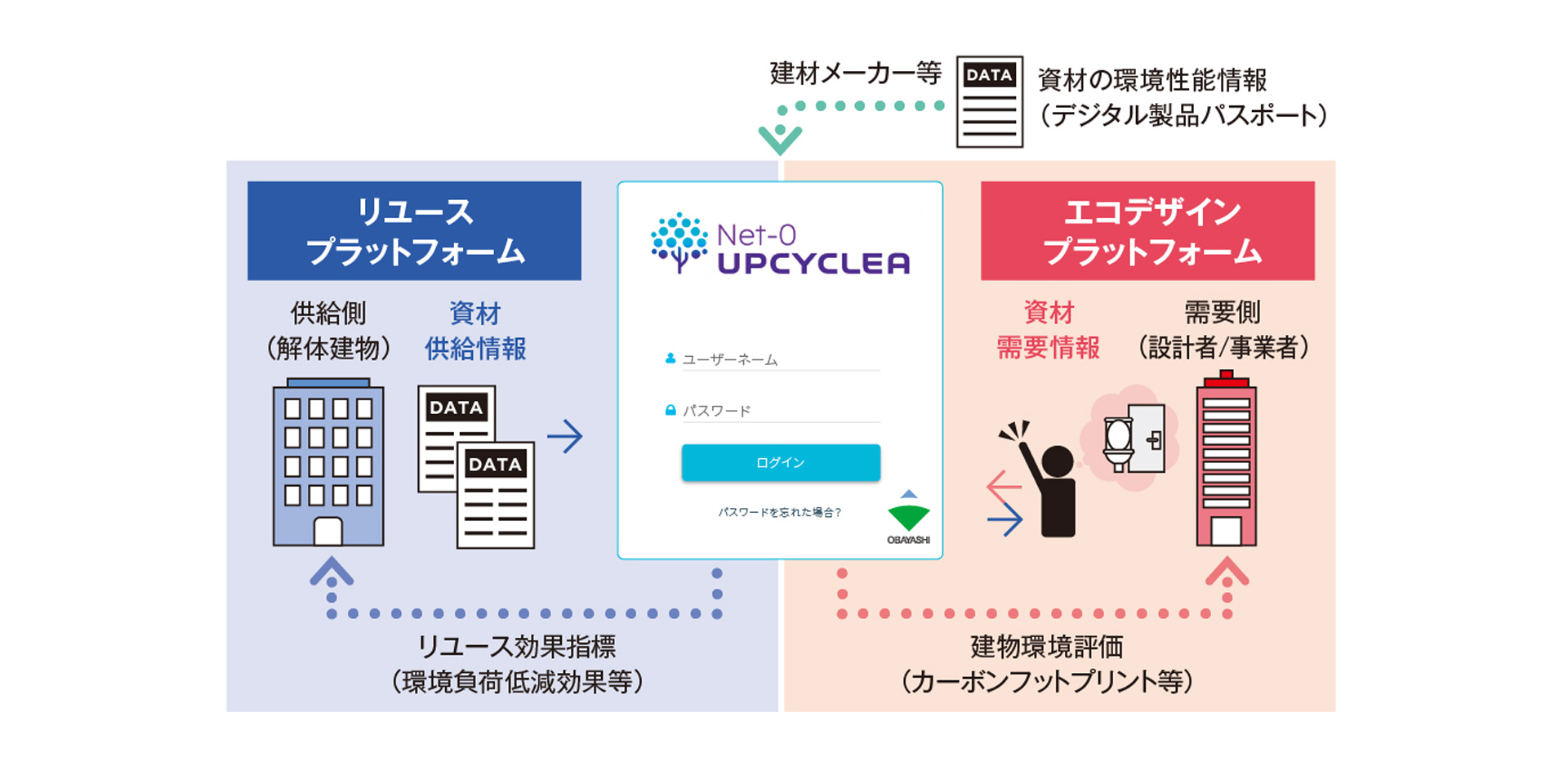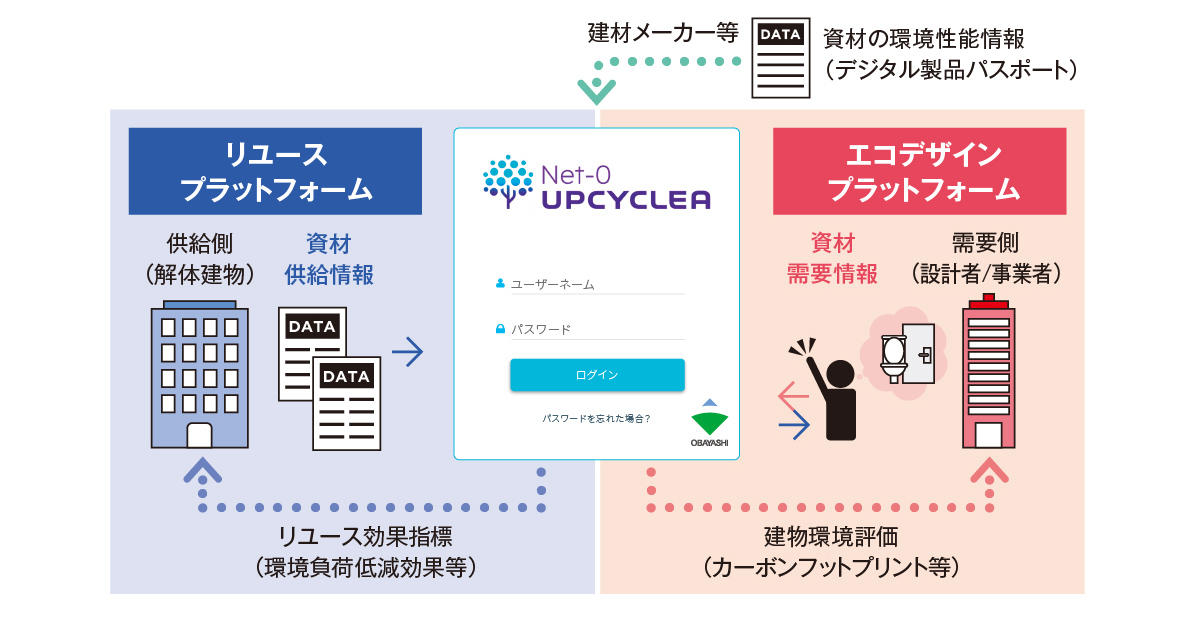Please note that some content is only available in Japanese

Utilization of the Resource Circulation Data Platform “Upcyclea”
Initiatives launched to promote Circular management of construction materials
POINT
-
Effective use of construction materials from demolition sites

Obayashi is utilizing the reuse platform Upcyclea, which visualizes the environmental performance of construction materials and their potential for reuse(*1). By storing and leveraging environmental performance data—also known as digital product passports—in Upcyclea, the company promotes Circular management of construction materials across the entire building lifecycle and enables the evaluation and visualization of environmental impact reductions through reuse. The platform’s built-in AI also allows it to match supply information for reusable materials from demolition sites with demand from new construction sites. Through this initiative, Obayashi contributes to the decarbonization of client portfolios and the organization of data for ESG reporting.
*1. Reuse potential: Indicates that construction materials are in a condition—both in quality and function—that allows them to be reused in other buildings, with measurable reductions in environmental impactEvaluation and visualization of multiple factors, including circularity and material health—not just CO2 reduction
Upcyclea evaluates CO2 emissions, water consumption volume, recyclability, material health(*2), and other factors based on the environmental performance information (digital product passport) of construction materials, and visualizes the environmental impact reduction effects of reuse.
The system also generates, visualizes, and records numerical data related to building lifecycle management(*3), including material traceability and quality status. A key feature is the ability to assess and visualize not only CO2 reduction but also multiple environmental factors such as circularity and material health.
*2. Material health: Assesses whether the raw materials used in construction products contain any substances harmful to human health.
*3. Building lifecycle management: Refers to the evaluation of environmentally related factors—such as CO2 emissions—across all phases of a building’s life, from material production to construction, use, and demolition.